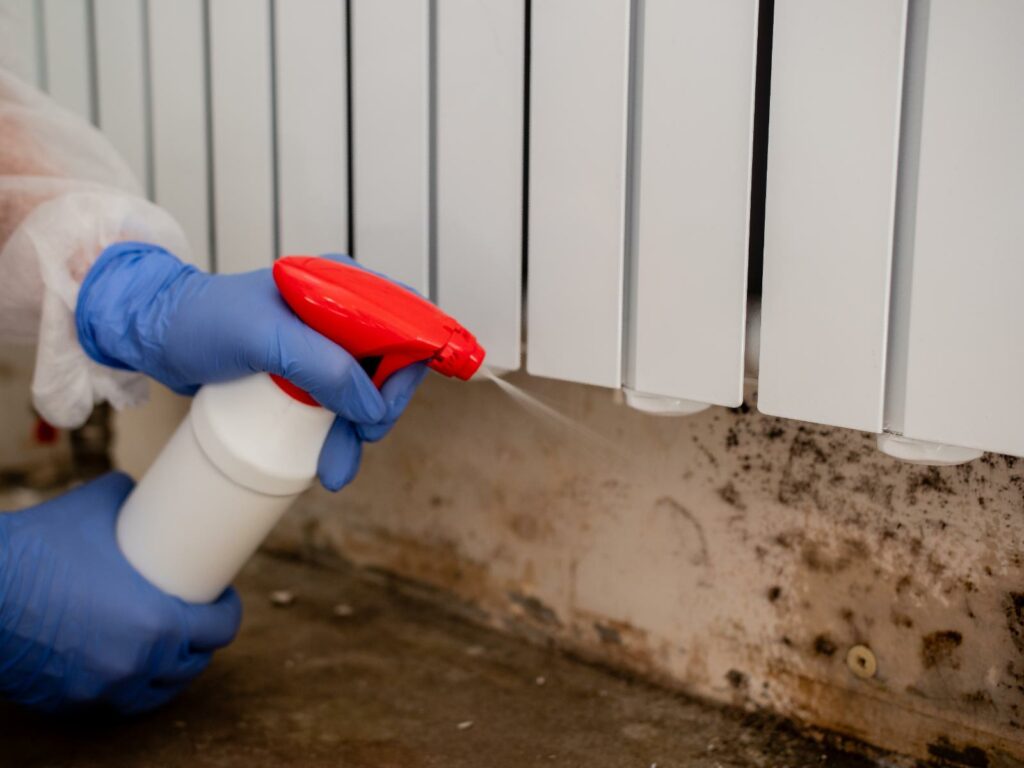You’ll want to ensure a swift and effective process when dealing with mold cleanup. Imagine having the knowledge to tackle mold issues efficiently and prevent them from escalating further. By following three essential tips, you can confidently navigate the complexities of mold cleanup. Understanding the initial steps to take, containment strategies to employ, and the significance of rapid drying can make all the difference in safeguarding your indoor environment. Stay tuned to uncover these key insights and transform your mold cleanup approach.
Key Takeaways
- Conduct immediate mold assessment to identify problem areas accurately.
- Establish efficient containment barriers and maintain negative air pressure.
- Swiftly dry and dehumidify wet areas to stop mold growth.
- Control moisture levels to prevent mold infestation and spreading.
- Enhance air circulation through proper ventilation for rapid mold cleanup.
Immediate Mold Assessment
Before proceeding with any mold cleanup efforts, it’s essential to conduct an immediate assessment of the extent of mold growth in your environment. Quick action is vital in these situations to prevent further spread and potential health risks. A professional inspection is highly recommended to accurately determine the scope of the mold issue. Certified inspectors have the expertise and tools to identify hidden mold growth, assess the level of contamination, and provide a detailed report outlining the necessary steps for remediation.
During the assessment, the inspector will thoroughly examine areas prone to mold growth, such as basements, bathrooms, and attics. They’ll also inspect for any water leaks, humidity levels, and ventilation issues that may be contributing to the mold problem. By identifying the root cause of the mold growth, you can effectively address the issue and prevent future recurrences.
Additionally, the inspection will help you understand the type of mold present in your environment. Different mold species require specific cleanup techniques, so this information is crucial for developing an appropriate remediation plan.
Efficient Containment Techniques
Evaluating the extent of mold growth in your environment will guide the implementation of efficient containment techniques to prevent further spread and ensure effective cleanup.
Containment barriers and moisture control are vital components in managing mold outbreaks. Here are some essential tips for efficient containment techniques:
Establish Containment Barriers: Set up physical barriers like plastic sheeting or negative air pressure machines to isolate the affected area from the rest of your home. This prevents mold spores from spreading to uncontaminated spaces.
Utilize Air Scrubbers: Air scrubbers equipped with HEPA filters can help capture and remove mold spores from the air, enhancing the containment process and improving air quality within the containment area.
Maintain Negative Air Pressure: By maintaining negative air pressure within the containment area, you ensure that any mold spores released during the cleanup process are contained and don’t escape into other parts of your home.
Monitor Moisture Levels: Regularly check and control the moisture levels in the containment area. Keeping humidity levels below 60% helps inhibit mold growth and aids in the effectiveness of the cleanup process.
Implementing these containment techniques with a focus on containment barriers and moisture control will enhance the cleanup process, prevent further mold spread, and contribute to a successful mold remediation effort.
Rapid Drying and Dehumidification
Rapid drying and dehumidification are important steps in restoring your environment to expedite mold cleanup and prevent further growth. Moisture control is essential in inhibiting mold development. High humidity levels create a breeding ground for mold spores, allowing them to flourish and spread rapidly. Swiftly drying wet areas can stop this process and reduce the risk of mold infestation.
Implementing effective air circulation is equally necessary. Proper ventilation aids in drying out damp spaces by facilitating the evaporation of excess moisture. This, in turn, helps prevent mold from taking hold and spreading further. Utilizing fans, dehumidifiers, and opening windows can greatly improve air circulation within your environment, expediting the drying process.
| Moisture Control | Air Circulation |
|---|---|
| Swiftly dry wet areas | Implement proper ventilation |
| Halt mold growth | Facilitate evaporation |
| Mitigate mold infestation | Prevent further spreading |
| Control humidity levels | Utilize fans and dehumidifiers |
| Prevent mold development | Enhance air circulation |
Review
To effectively combat mold infestation, prioritize rapid mold assessment. Efficient containment techniques and swift drying and dehumidification are essential.
Did you know that mold can start to grow within 24-48 hours of water damage occurring? This statistic highlights the importance of taking immediate action to prevent mold from spreading and causing further damage.
By implementing these key strategies, you can guarantee a thorough and successful mold cleanup process.

